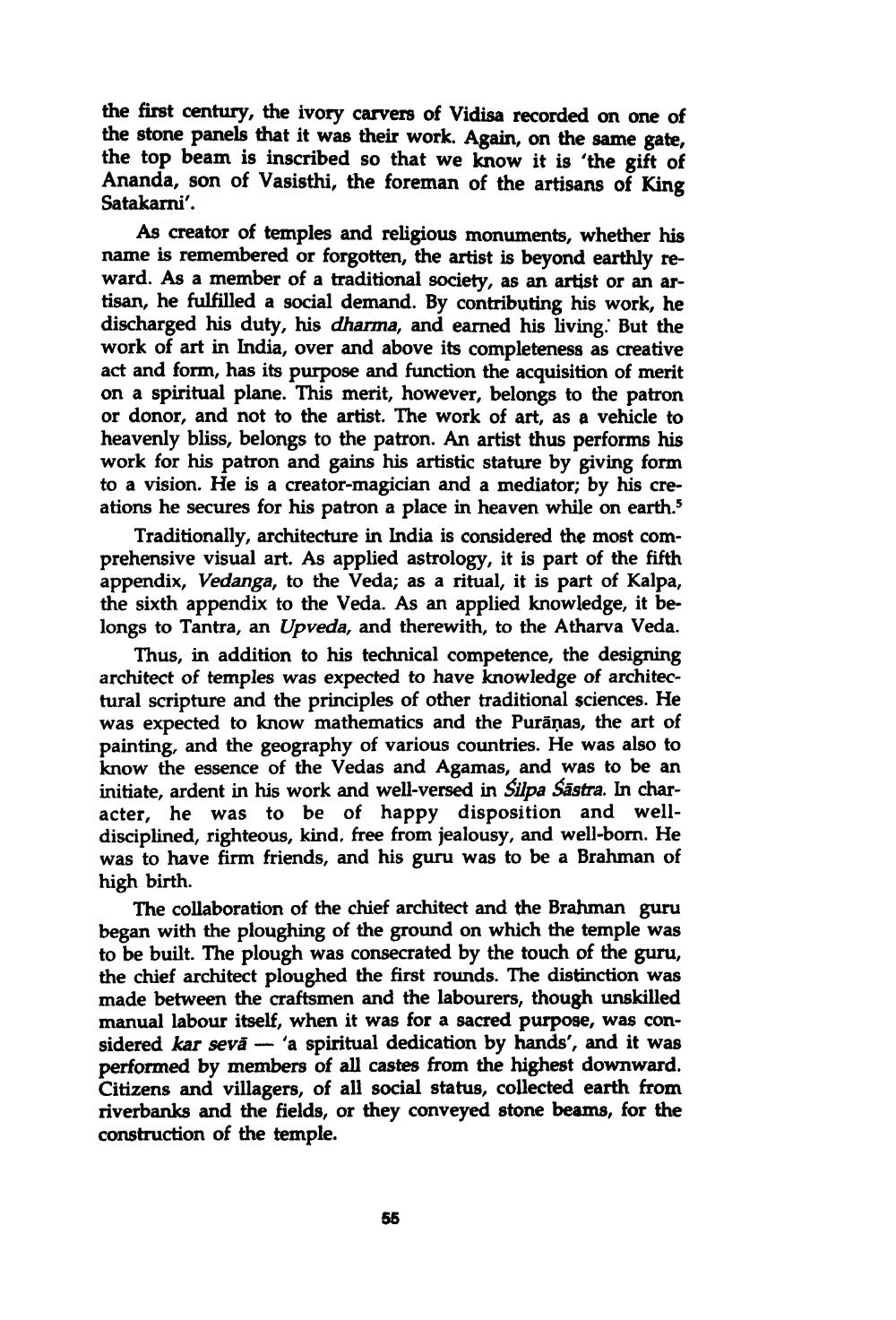________________
the first century, the ivory carvers of Vidisa recorded on one of the stone panels that it was their work. Again, on the same gate, the top beam is inscribed so that we know it is 'the gift of Ananda, son of Vasisthi, the foreman of the artisans of King
Satakarni'.
As creator of temples and religious monuments, whether his name is remembered or forgotten, the artist is beyond earthly reward. As a member of a traditional society, as an artist or an artisan, he fulfilled a social demand. By contributing his work, he discharged his duty, his dharma, and earned his living. But the work of art in India, over and above its completeness as creative act and form, has its purpose and function the acquisition of merit on a spiritual plane. This merit, however, belongs to the patron or donor, and not to the artist. The work of art, as a vehicle to heavenly bliss, belongs to the patron. An artist thus performs his work for his patron and gains his artistic stature by giving form to a vision. He is a creator-magician and a mediator; by his creations he secures for his patron a place in heaven while on earth."
Traditionally, architecture in India is considered the most comprehensive visual art. As applied astrology, it is part of the fifth appendix, Vedanga, to the Veda; as a ritual, it is part of Kalpa, the sixth appendix to the Veda. As an applied knowledge, it belongs to Tantra, an Upveda, and therewith, to the Atharva Veda.
Thus, in addition to his technical competence, the designing architect of temples was expected to have knowledge of architectural scripture and the principles of other traditional sciences. He was expected to know mathematics and the Purāņas, the art of painting, and the geography of various countries. He was also to know the essence of the Vedas and Agamas, and was to be an initiate, ardent in his work and well-versed in Silpa Sastra. In character, he was to be of happy disposition and welldisciplined, righteous, kind, free from jealousy, and well-born. He was to have firm friends, and his guru was to be a Brahman of high birth.
The collaboration of the chief architect and the Brahman guru began with the ploughing of the ground on which the temple was to be built. The plough was consecrated by the touch of the guru, the chief architect ploughed the first rounds. The distinction was made between the craftsmen and the labourers, though unskilled manual labour itself, when it was for a sacred purpose, was considered kar sevā - 'a spiritual dedication by hands', and it was performed by members of all castes from the highest downward. Citizens and villagers, of all social status, collected earth from riverbanks and the fields, or they conveyed stone beams, for the construction of the temple.
55




